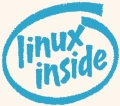1.上传VHD文件到Azure Blob Storage
VHDUpload程序的源代码在Windows Azure Training Kit目录Labs\ExploringWindowsAzureStorageVS2010\Source\Assets\VHDUpload,先编译成VHDUpload.exe。然后上传
Uploads a virtual hard disk (VHD) file to Windows Azure page blob service.
usage: VHDUPLOAD vhdFilePath blobUri accountName accountKey
vhdFilePath - path to virtual hard disk (VHD) file
blobUri - destination page blob relative URI (i.e. container/blobname)
accountName - storage account name (use devstorage for storage emulator)
accountKey - storage account primary key (omit for storage smulator)
VHDUpload上传过程如下所示:
2. 自写命令行程序Mount Drive
主要代码如下(请修改成相应的存储帐户和存储密钥,并编译成EXE):
- class Program
- {
- const string sMainStorageName = "StorageAccountName";
- const string sMainStorageKey = "StorageKey";
- static void Main(string[] args)
- {
- string sVHDPathName = string.Empty;
- string sOperation = string.Empty;
- bool IfUnmount = false;
- if (args.Count() == 0)
- {
- Console.WriteLine("Syntax: MountAzureDrive ContainerName/Disk.VHD");
- return;
- }
- try
- {
- sVHDPathName = args[0];
- if (args.Length > 1)
- {
- sOperation = args[1];
- if (args[1] == "/u")
- IfUnmount = true;
- }
- var cloudDriveBlobPath = string.Format("http://{0}.blob.core.windows.net/{1}", sMainStorageName, sVHDPathName);
- StorageCredentialsAccountAndKey credentials = new StorageCredentialsAccountAndKey(sMainStorageName, sMainStorageKey);
- // LocalResource localCache = RoleEnvironment.GetLocalResource(sMainLocalStorageName);
- // Char[] backSlash = { '\\' };
- //String localCachePath = localCache.RootPath.TrimEnd(backSlash);
- //CloudDrive.InitializeCache(localCachePath, localCache.MaximumSizeInMegabytes);
- //string cachePath = @"C:\Resources\LocalStorage"; //for VM role
- //Console.WriteLine("Local Cache initialized.....{0}", cachePath);
- //try
- //{
- // CloudDrive.InitializeCache(cachePath, 10);
- //}
- //catch (Exception e)
- //{
- // Console.WriteLine(e.Message);
- //}
- if (IfUnmount)
- {
- Console.WriteLine("UnMount Drive " + cloudDriveBlobPath);
- CloudDrive mountDrive = new CloudDrive(new Uri(cloudDriveBlobPath), credentials);
- Console.WriteLine("Calling Cloud Drive UnMount API....", 0);
- mountDrive.Unmount();
- Console.WriteLine("Finished Cloud Drive UnMount .");
- }
- else
- {
- Console.WriteLine("Mount Drive " + cloudDriveBlobPath);
- CloudDrive mountDrive = new CloudDrive(new Uri(cloudDriveBlobPath), credentials);
- Console.WriteLine("Calling Cloud Drive Mount API....", 0);
- string driveLetter = mountDrive.Mount(0, DriveMountOptions.FixFileSystemErrors | DriveMountOptions.Force);
- Console.WriteLine("Finished Cloud Drive Mounting at Drive :" + driveLetter, 0);
- }
- }
- catch (Exception ex)
- {
- Console.WriteLine(ex.Message);
- }
- }
- }
3. 在虚拟机里执行Mount动作
使用上述命令行:

下图的E盘是Mount之后的效果。(VM Role里实验通过)

原文:
http://blog.csdn.net/lihonggen0/article/details/7419738